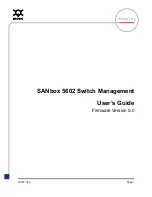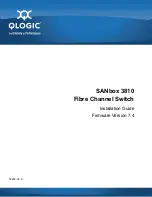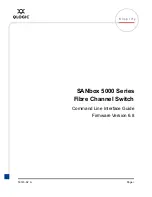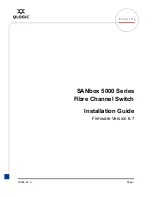
Falcon
M-Class
| User Guide
18
2.3.3
NetACE
–
Key features and benefits:
Fibrolan offers the NetACE platform along with dedicated integrated tools for managing its products
(e.g. Falcon) within a complex network The NetACE Orchestrator is a NetOps-driven Service Lifecycle
Orchestration, well-known, widely spread platform for managing various networks. The NetACE
manages network elements of practically any vendor and therefore enables the operator to manage
all devices on the network through a single generic interface, eliminating the need to purchase and
maintain different system for each vendor's products
Main platform modules:
NetACE Orchestrator: Lifecycle Service Orchestration, Automation and Assurance
NetACE Analytics: An extension module for SLA Management, Service Analytics and Business
Support
NetACE Multi-tenant SLA Portal: An extension module for transparent visualization of Service
Performance, SLA Assurance and B2C Communication
2.4
Falcon
M
-
Cass series ports features
The M-Class models ports can be configured to support special data-plain functions. extended traffic
handling capabilities, more functionality and processing power. These capabilities are Software and
Firmware based and therefore field upgradeable and configurable.
The following special features are supported by the M-Class series models ports:
MEF9 EVPL support
–
S-tag assignment based on C-tag (can be extended to other types of
classifications for S-tag assignment). Per port + VLAN (C-tag) double tagging (S-tag assignment) are
supported. Such functionality enables full compliance with the MEF9 standard (including EVPL). Refer
to Provider Bridges (QinQ)
•
Access ports - support service based policing with dual leaky bucket per service
•
MEF8: Emulation of PDH Circuits over Metro Ethernet Netwo
rks (µFalcon ST & STA only)
•
MEF14 EVPL support
–
C-tag classification enables per service.
•
MEF 20: specifies an Implementation Agreement (IA) for MEF User to Network Interface
(UNI) Type 2.
•
MEF 22.1 :Mobile Backhaul Phase 2
•
Service Accounting
•
Service accounting is realized using service frame and byte counters
•
Per Service Counters: The M-Class series models support frame and byte counters per
service basis.
•
Link OAM (IEEE802.3ah) and Service OAM (based on IEEE 802.1ag, ITU-T Y.1731)
•
ITU Y.1731 data-plane support
–
several functions of this standard requires HW based
support These functions are:
•
Loss measurement
•
Delay measurement
•
Delay variation measurement
•
Synchronous Ethernet and 1588-2008 for LTE mobile backhaul applications.
Summary of Contents for Falcon Gen-3 M-Class
Page 90: ...Falcon M Class User Guide 90...
Page 107: ...Falcon M Class User Guide 107 Figure 4 57 DSCP Translation...
Page 139: ...Falcon M Class User Guide 139...
Page 187: ...Falcon M Class User Guide 187 Figure 4 99 RADIUS Statistics for Server...
Page 197: ...Falcon M Class User Guide 197 4 11 6 SyncCenter Status Figure 4 104 Sync Center Status...
Page 214: ...Falcon M Class User Guide 214...
Page 227: ...Falcon M Class User Guide 227...
Page 234: ...Falcon M Class User Guide 234...
Page 358: ...Falcon M Class User Guide 358 Figure 4 216 sFlow Configuration displays...
Page 376: ...Falcon M Class User Guide 376...
Page 403: ...Falcon M Class User Guide 403...
















































